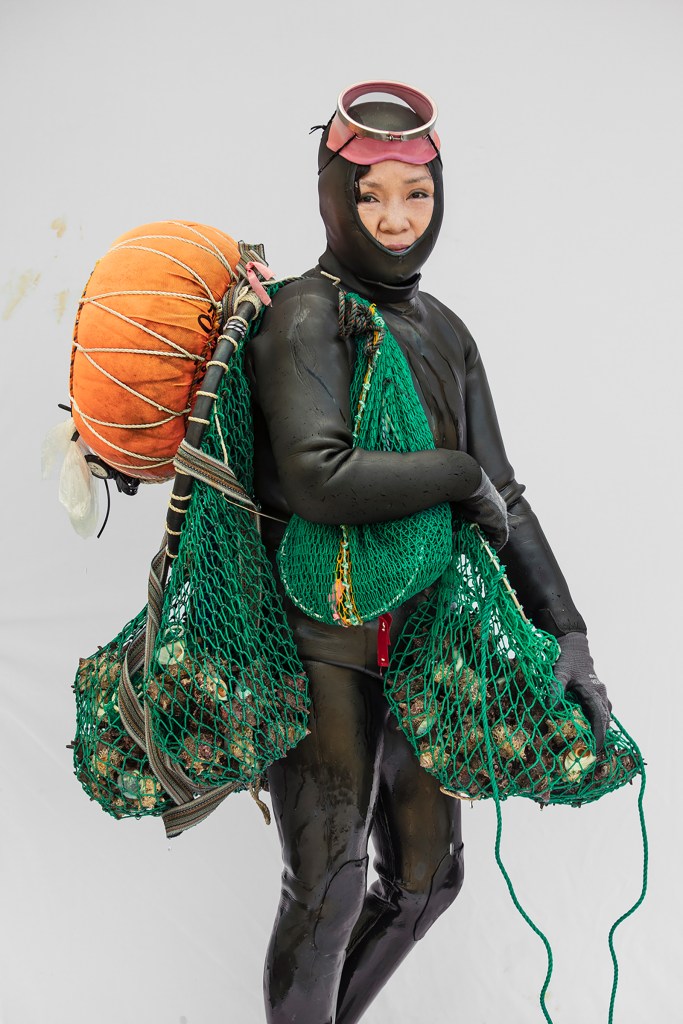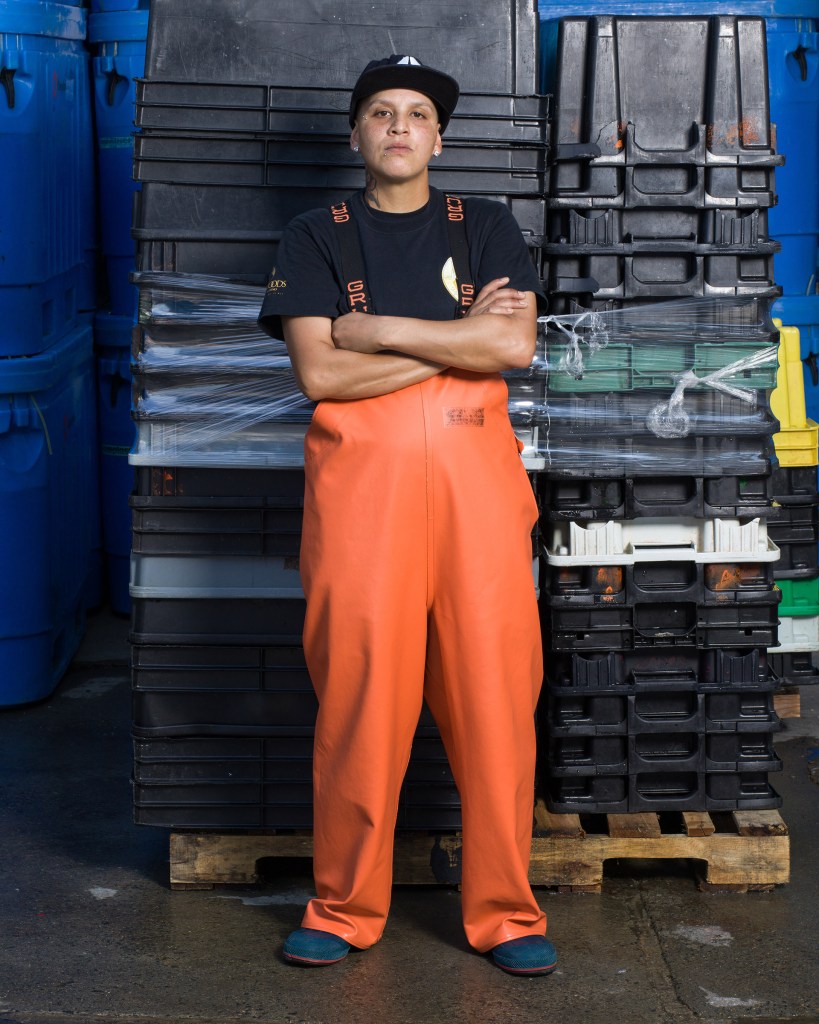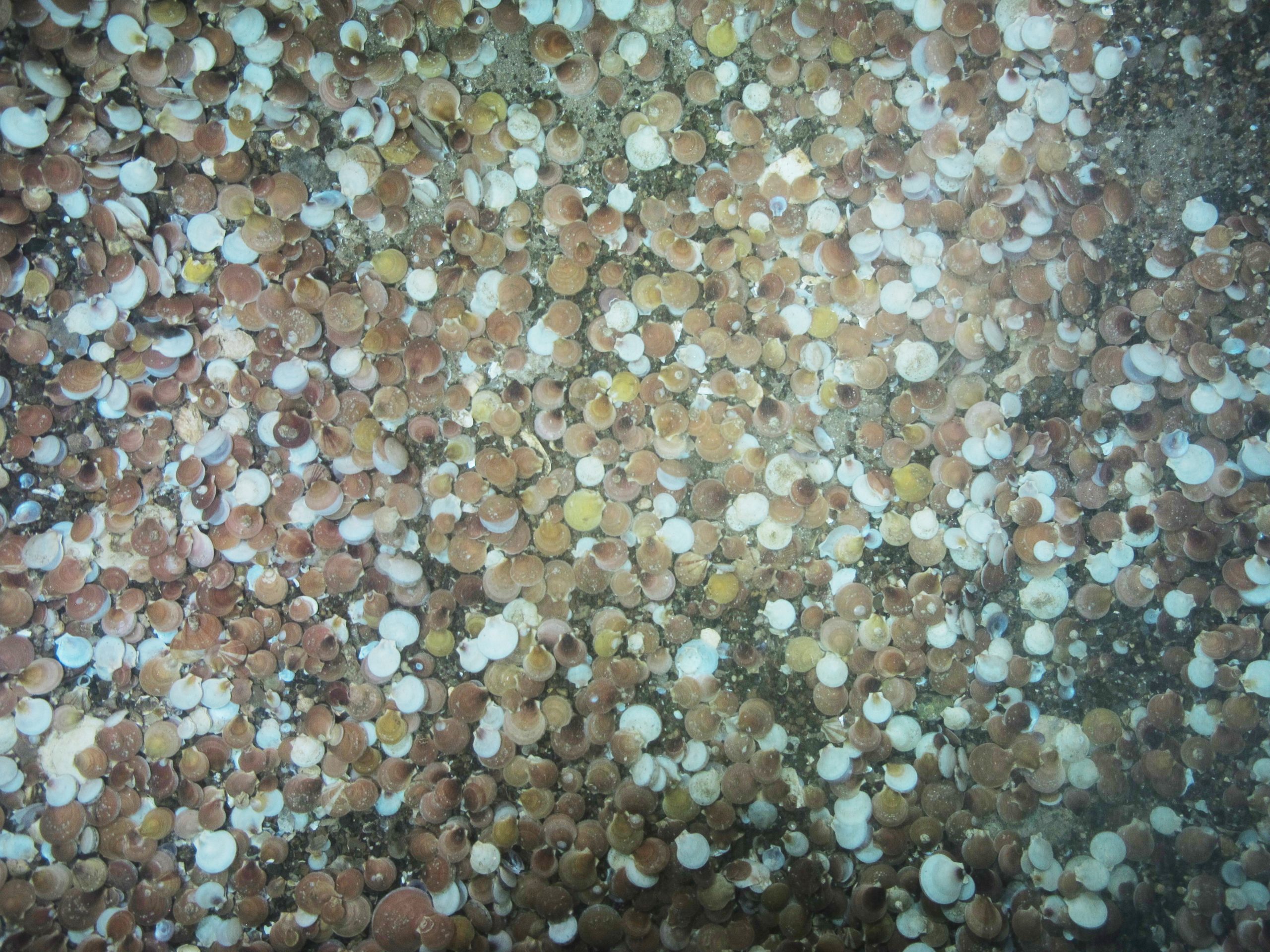Read the article directly from The New Bedford Light here.
DATMA exhibition floods New Bedford streets with aquatic and fishing-themed art.
When the late Roger Mandle and his wife Gayle founded DATMA, the exhibit “Water 2021” was just the kind of cutting-edge installation Roger had in mind for New Bedford.
He wanted a contemporary museum that didn’t collect old stuff; but rather one that would bring art and design from new technologies and materials to New Bedford, and in turn take the world of New Bedford to new places.
“Exhibitions can happen anywhere,” he told The Standard-Times in 2018. “They can happen virtually on your computer, they can happen projected on your walls, they can happen in parks, they can happen in buildings, on buildings, they can happen in the sky.”
This summer, the internationally known Swiss artist Zimoun’s architectural installation for DATMA’s “Water 2021” is happening in New Bedford. It is a long, curved wall of cardboard boxes with attached cotton balls, propelled by small motors, bouncing off the boxes in unison. It happens in one of the UMass Star Store’s galleries in the downtown, visible easily through the big windows looking out on the corner of Union and Purchase streets.
Now that COVID-19 restrictions have lessened, the work is also much more visible and much more audible inside the downtown campus’ actual corner gallery.
Of the piece, the curators wrote “Seemingly chaotic, repetitive motions are contrasted by the enveloping sounds emitted by the artwork, simulating a soft rain or the sound of running water.”
That’s an understatement.
Indoors, the installation is louder than soft rain, more like the heavy pounding rain of a thunderstorm. It’s also a bit like the hum of the ocean if the crashing waves were much quicker and more regular. Maybe it’s most like the steady drone of a scallop boat engine pushing up against the background hum of those waves.
It’s a rhythmic little roar that transports you to somewhere else in your mind. The exhibit label describes it as an exploration of the juxtaposition of the simple and the complex, the manufactured and the organic.
“It is so unusual, imaginative and out-of-the box. We were hoping that would inspire people … to think outside of the norms of art, to push them, to challenge people’s perceptions of what art can be,” said Lindsay Mis, executive director of DATMA (the Massachusetts Design, Art and Technology Institute).
As commanding and thought-provoking a work as Zimoun’s will remain in New Bedford all summer, until Oct. 17.
Now in its third year, DATMA previously installed “Summer Winds 2019,” which included “Silver Currents,” an exhibition of shimmering film in Custom House Park, and last year “Light 2020,” which splashed light shows up and down Union.
Harvesters of the Deep
With the spike to downtown businesses of last year’s installation, this year DATMA is up and down Union again, and over on MacArthur Drive, between the State Pier and the Black Whale.
Besides Zimoun, there are two other “Water 2021” exhibits that prompt New Bedford to think of itself differently. A lot differently.
In the case of “Harvesters of the Deep,” the invisible is made visible. Did you know that most of the workers in seafood processing houses are women? They are. Even though you’ve probably never seen a formal portrait of a woman as a seafood house laborer.


 Photo by Phil Mello
Photo by Phil Mello
Like Maria Gomez, a Central American woman who works as a skinning machine operator.
Dressed in a heavy, fish-proof rubber apron over her white smock and hairnet, Gomez stares into the camera with just a hint of a smile. Her rubber-gloved hands on a filet that she has fed into the skinning machine.
Is she like Mona Lisa, happy in her circumstances? It’s hard to imagine that. And yet her dignity and slight smile amidst the hard surroundings is clear.
Mello said most of the seafood plant workers are Latinas now, whereas 30 and 40 years ago they were Portuguese. “The Central Americans are hard-working, honest people,” he said.
He talked of Mariana Moreno, who is also pictured on one of the three-sided poster display panels built by the Voc-Tech kids for “Water 2021.”
Moreno started at the bottom and now knows everything about the fish processing business, he said. She has gone to school and worked her way up to being an office sales rep.
“Water 2021” is not just bringing Union Street the New Bedford seafood workers. It’s also bringing to the city the women of the fishing industry in other parts of the world. On a series of three-sided outdoor display panels, there are startling photos of Korean and British women who work the sea trade.
In Korea, a diving industry on Jeju Island off the southern coast is almost entirely comprised of women. Hyung S. Kim’s photos of the Haenyeo (sea women) tells the story of women who dive without oxygen tanks to harvest shellfish. Often the sole supporters of their families, you will never see more noble and rugged women than those pictured in these photos.
One of them is named Hyun Okran and she stares down the camera with all the self-confidence of the most intrepid individualist. Dressed in scuba gear from head to foot, she’s freshly emerged from the deep, looking for all the world a person who has sustained her family in the most dangerous of ways.


A Korean shellfish diver and New Bedford seafood plant worker. Photos by Hyung S. Kim and Phil Mello
Then there are the “herring lassies” from Britain, a group of migrant women workers who for 150 years or so traveled the length of the east coast of England up through Scotland and into the Orkney Islands.
They filled baskets with herring fish and smoked them right on the beaches. First one port and then another and another.
The successors to the herring lassies no longer travel with the fish seasons but many of them still work in the United Kingdom’s seafood houses, and Craig Easton’s photos of those cutters and smokers won’t fail to move you. Like Louise Hutchins, a filleter from Aberdeen, bent over laughing with a fish in one hand and her ready-to-go cutting knife in the other.
Mis acknowledged the dignity captured in the photos of these fish industry workers, almost like a gift to the New Bedford women who work the seafood from their counterparts in Europe and Asia.

DATMA Executive Director Lindsay Mis talks about the “Harvesters of the Deep” display on Union Street. Photo by Jack Spillane
“Laura Orleans said it perfectly,” Mis said. “She said, ‘We just want to celebrate these unsung heroes.’”
Sea Scallops, Sentinels of the Deep
The third and final installation of “Water 2021” consists of a series of banners of photographs that were initially pasted on scaffolding at the New Bedford Housing Authority’s Union Street construction site for a new residential building. The banners have since been transferred to a fence surrounding several buildings recently demolished to make way for the coming new building.
This series of photographs documents UMass Dartmouth scientist Kevin Stokesbury’s invention of a camera and device that is able to document the number of scallops in the North Atlantic. Included are striking photos taken with that camera of scallops on the sea bed, surrounded in their environment by sea creatures like dogfish and lobsters.

Mis points out that the process that saved the city’s scallop industry was, like DATMA, one that was based on technology and design.
“People were using simple design and technology to basically change a way of life and enhance it. And it came from New Bedford,” she said.
Since the show was planned during a pandemic, there is also an online component. You can go to a QR code that will take you to a map of the places in the Atlantic sea floor, where the photographs were taken. Many of the photos of seafood workers in the “Harvesters of the Deep” exhibit are also online at the DATMA website.
“We wanted to make sure you could access parts of the exhibit online,” Mis said.
All of this DATMA celebration has helped bring tourists up the street from the art and culture centered in the New Bedford historic district to the commercial heart of the downtown, according to DATMA.
Mis described “Water 2021” as like a wayfinder, directing tourists up the hill and toward the cultural and commercial destinations of Upper Union and its side streets.
“We have the opportunity to put art in an accessible way,” she said.
“Because of design, art and technology working together, those things can make projects like this accessible to people walking by.”
by
